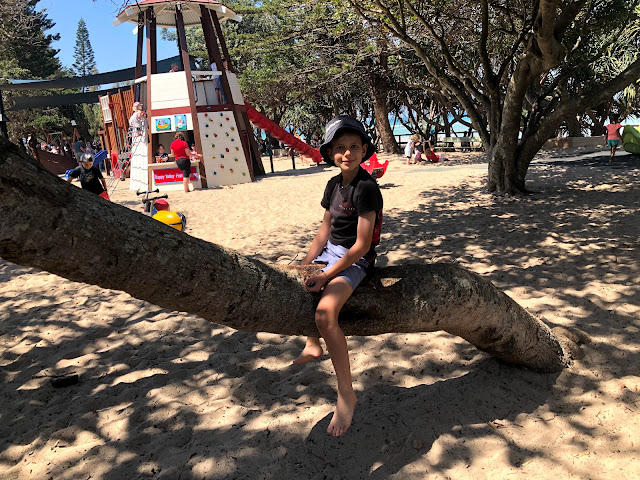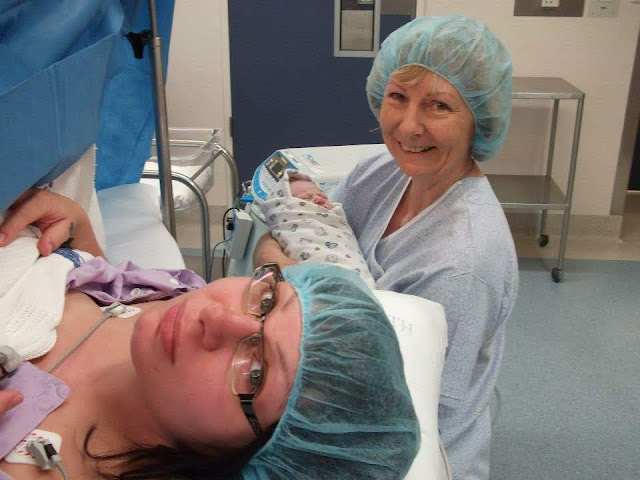A Critical Evaluation of Three Different Methods for Treating Generalised Anxiety Disorder
ISTDP is a psychotherapy based on the theory that anxiety and depression are products of adverse life experiences, such as childhood traumas (Lilliengren et. al. 2017). The theory holds that this leads to generalised anxiety and maladaptive defence mechanisms in response to unprocessed emotions reactivating in new, and seemingly unrelated, situations. Lilliengren et. al. undertook a study on ISTPP in 2017 to evaluate its clinical and cost-effectiveness in treating GAD. Additionally, this study examined one of the key processes within the treatment known as the mobilisation of unprocessed complex emotions (MUCE) and its links to outcome. The sample was comprised of 215 patients, 60.9% of which were females. It is thus unknown whether this predominantly female sample influenced outcome. Age was another potential influencing factor, with 80% aged 19–35, 11.2% 36–60 years, and only 8.8% aged over 60 years. In addition, the study included conditions comorbid with GAD (Lilliengren et. al., 2017) and it therefore cannot be concluded that this, did not influence the results. The study occurred at the Centre for Emotions and Health (CEH) at Dalhousie University and all participants fit diagnostic criteria for GAD in the DSM-IV. Diagnoses were confirmed by each patient’s treating therapist at CEH, as well as by their supervising psychiatrist, using information gleaned from the patient’s referral, initial interview, and observation throughout treatment. The study was approved by its local hospital ethics review board and was a registered clinical trial with identifier number NCT01924715. Treatment commenced with an interview of 2–3 hours, focussed on identifying patients’ problematic areas, as well as assessing capacity for intense emotion-focussed therapy, or whether a graded format of ISTPP would be more suitable. Patients’ self-reported symptoms were assessed using the Brief Symptom Inventory. The Inventory of Interpersonal Problems was utilised at these same points. MUCE levels were monitored by a 5-point scale addressing emotional expressiveness and arousal, and activation of unconscious anxieties, defence mechanisms and other indications of the unconscious therapeutic alliance. Each patient attended an average of 8.3 sessions.
Treatment was administered by 38 therapists: 22 were psychiatry residents based at CEH, 11 were licensed health professionals, and 5 were trainees learning ISTDP at CEH (Lilliengren et. al., 2017). All therapists took part in weekly supervision and didactic courses in which reviews of filmed sessions were led by an ISTDP trainer. Reliability of data was impacted by the absence of a control group and the inclusion of patients’ self-reported data. Missing data was another issue. This could be attributed to the longitudinal nature of the study which took place over a 9-year period. This included follow-up of participants’ changing healthcare costs over time. Costs decreased each year for 4 years but were significantly lower in the first-year post-treatment. The average reduction per patient, over the 4-year period, was $16,205. This indicates that ISTDP is beneficial in treating GAD. Moreover, effects are optimised in relation to high levels of emotional activation during treatment sessions. The results should nevertheless be interpreted with caution in the absence of a control group and complete data. It is unknown whether combining ISTDP with psychopharmacological treatment could enhance positive outcomes and further research on this in the imminent future would be clinically relevant.
CBT is a group of scientifically evidenced interventions targeting dysfunctional thought patterns to reduce anxiety (Carpenter et al., 2018). In 2018, Carpenter et al. conducted a meta-analysis of the effectiveness of CBT using randomised placebo-controlled trials. Researchers reviewed 41 studies, totalling 2,843 patients aged 18–65 years with GAD or other similar conditions. GAD was represented in two of these studies, totalling 57 patients. Each patient was randomly assigned CBT; a psychological placebo, such as counselling; or a pill placebo (Carpenter et al., 2018). The study adhered to the Preferred Reporting Items for Systematic Reviews and Meta-analyses statement and was registered with the International Prospective Register of Systematic Reviews under the number, CRD42016050841. Eligible studies were sourced from PubMed and PsycINFO and risk of bias was combatted with the Cochrane Collaboration’s tool.
Most patients randomly assigned CBT
were guided through a combination of exposure and cognitive strategies throughout
an average of 11 sessions (Carpenter et al., 2018). The mean age was 36, 58.9%
were female, and 73% were Caucasian. The possibility a more racially and/or
gender diverse sample would alter results can thus not be ruled out. Outcomes
may also have been influenced by including patients treated with various
psychiatric medications. Interestingly, CBT had a drop-out rate 6.8% higher
(24% compared to 17.2%) than its placebo counterpart (Carpenter et al., 2018).
Despite this, results yielded significant improvement in the CBT sample, as
opposed to the placebo; however, researchers warn due diligence should be
exercised when examining outcomes. Analysis was limited in that many included
studies had not properly accounted for missing data. Likewise, varying control
conditions may have swayed outcomes. “Despite these limitations, the present
results provide strong evidence that CBT is an efficacious treatment for
anxiety and related disorders in adults, and its effects meaningfully exceed
that of placebo” (Carpenter et al., 2018, p. 7). It can thus be assumed that
CBT is an effective treatment option for GAD.
Crits-Christoph et al. (2011) conducted a study on the efficacy of combined medication and CBT for treating GAD. The medication was Venlafaxine XR, a prescription drug used to treat anxiety and depressive disorders. Research psychiatrists recruited participants from four primary care practices, while a fifth group were enrolled in a university psychopharmacology clinic. Expressions of interest were screened using the Anxiety Screening Questionnaire (ASQ-15). Those with comorbid conditions were excluded, as were those treated with buspirone, anticonvulsants, neuroleptics, or any other antidepressants in the 14 days prior to the trial’s start date. This may have influenced outcomes due to the high prevalence of comorbid conditions occurring alongside GAD. This limits generalisability of results, particularly for those with dual diagnoses.
Participants commenced a long-term venlafaxine XR trial during which randomly selected patients were offered 12 CBT sessions, administered weekly (Crits-Christoph et al., 2011). 33% agreed and participated in at least one session. The venlafaxine XR trial was approved and overseen by the local Institutional Review Board and the randomised CBT combined therapy was approved by this same board. Further, the combined study was funded by the National Institute of Mental Health with grant R34-MH072678 and the venlafaxine XR parent study, with grant R01-065963.
CBT sessions were carried out by
five doctoral-level licensed psychologists: two females and three males (Crits-Christoph et al., 2011). All were experienced in
treating anxiety disorders using CBT and were, on average, 10 years
post-doctoral. The HAM-A was implemented to assess anxiety and the 17-item
version of the HAM-D, to monitor depression. The Clinical Global Impressions
Severity and Improvement scales (CGI-S and CGI-I) assessed severity of illness
and improvement. Self-report methods for patients included the quality-of-life
subscale of the General Health Questionnaire (GHQ/12-QL), Penn State Worry
Questionnaire, and Hospital Anxiety and Depression scale. Ultimately, no
evidence of added benefit in the combined therapy sample was identified and,
contrarily, improvement was swifter in patients treated with venlafaxine XR
alone. It should, however, be noted that two thirds of patients offered
combined treatment declined, potentially indicating a preference for the
convenience of medication. While further studies of combined therapy across
different settings, using various inclusion criteria are warranted, for
patients with a standalone diagnosis of GAD, treatment with venlafaxine XR is
fast, effective, and convenient.
Three treatment methods for GAD were compared with the aim of determining the most efficacious option. The first treatment explored was ISTDP which was found to significantly decrease healthcare costs associated with GAD over a 4-year period. This study was limited by the absence of a control group and the presence of missing data. Secondly, CBT was investigated, and results of a placebo-controlled study revealed substantial positive effects on GAD symptoms. Again, missing data posed a problem and varying placebo may have impacted outcomes. Finally, venlafaxine XR as a pharmacological treatment of GAD was compared with a package of venlafaxine XR and CBT. Combined treatment was not more beneficial. It is acknowledged that exclusion criteria limited generalisability, though for patients with a diagnosis of GAD alone, venlafaxine XR is proven to be effective, and is an important treatment option for those unable to commit to psychotherapy. For patients desiring combined treatment, venlafaxine XR with ISTDP may be preferable, given that combined CBT provided no added benefits. Further studies are required to confirm the efficacy of combined venlafaxine XR and ISTDP in the treatment of GAD.
References
Carpenter,
J. K., Andrews, L. A., Witcraft, S. M., Powers, M. B., Smits, J. A. J., &
Hofmann, S. G. (2018). Cognitive
behavioral therapy for anxiety and related disorders: a meta-analysis of randomized placebo-controlled trials.
Depression and Anxiety, 35(6), 502–514. http://doi- org.ezproxy.usq.edu.au/10.1002/da.22728.
Crits-Christoph, P., Newman, M. G., Rickels,
K., Gallop, R., Gibbons, M. B. C., Hamilton, J. L., Ring-Kurtz, S., & Pastva, A. M. (2011). Combined medication and
cognitive therapy for generalized
anxiety disorder. Journal of Anxiety Disorders, 25(8), 1087–1094. http://doi.org/10.1016/j.janxdis.2011.07.007
Cuijpers, P., Sijbrandij, M., Koole, S., Huibers, M., Berking, M., & Andersson, G. (2014). Psychological treatment of generalized anxiety disorder: a meta-analysis. Clinical Psychology Review, 34(2014), 130–140. http://dx.doi.org/10.1016/j.cpr.2014.01.002
Lilliengren,
P., Johansson, R., Town, J. M., Kisely, S., & Abbass, A. (2017). Intensive
short-term dynamic psychotherapy for
generalized anxiety disorder: a pilot effectiveness and process- outcome study. Clinical Psychology & Psychotherapy,
24(6), 1313–1321. http://doi- org.ezproxy.usq.edu.au/10.1002/cpp.2101.
Salzer, S., Winkelbach, C., Leweke, F., Leibing, E., & Leichsenring, F. (2011). Long-term effects of short-term psychodynamic psychotherapy and cognitive-behavioural therapy in generalized anxiety disorder: 12-month follow-up. Canadian Journal of Psychiatry, 56(8), 503–508.
google.com, pub-5896944412523933, DIRECT, f08c47fec0942fa0









Comments
Post a Comment